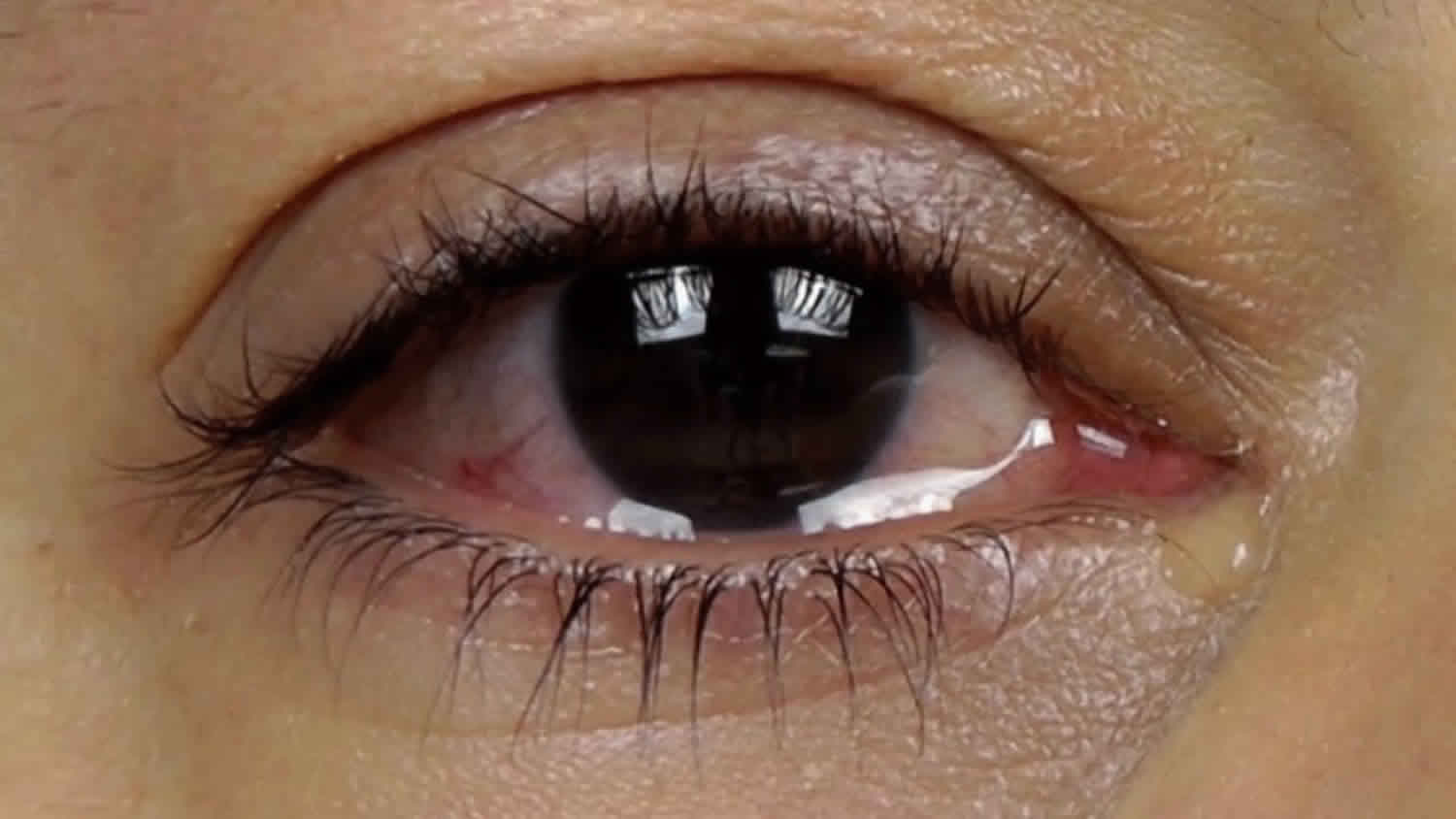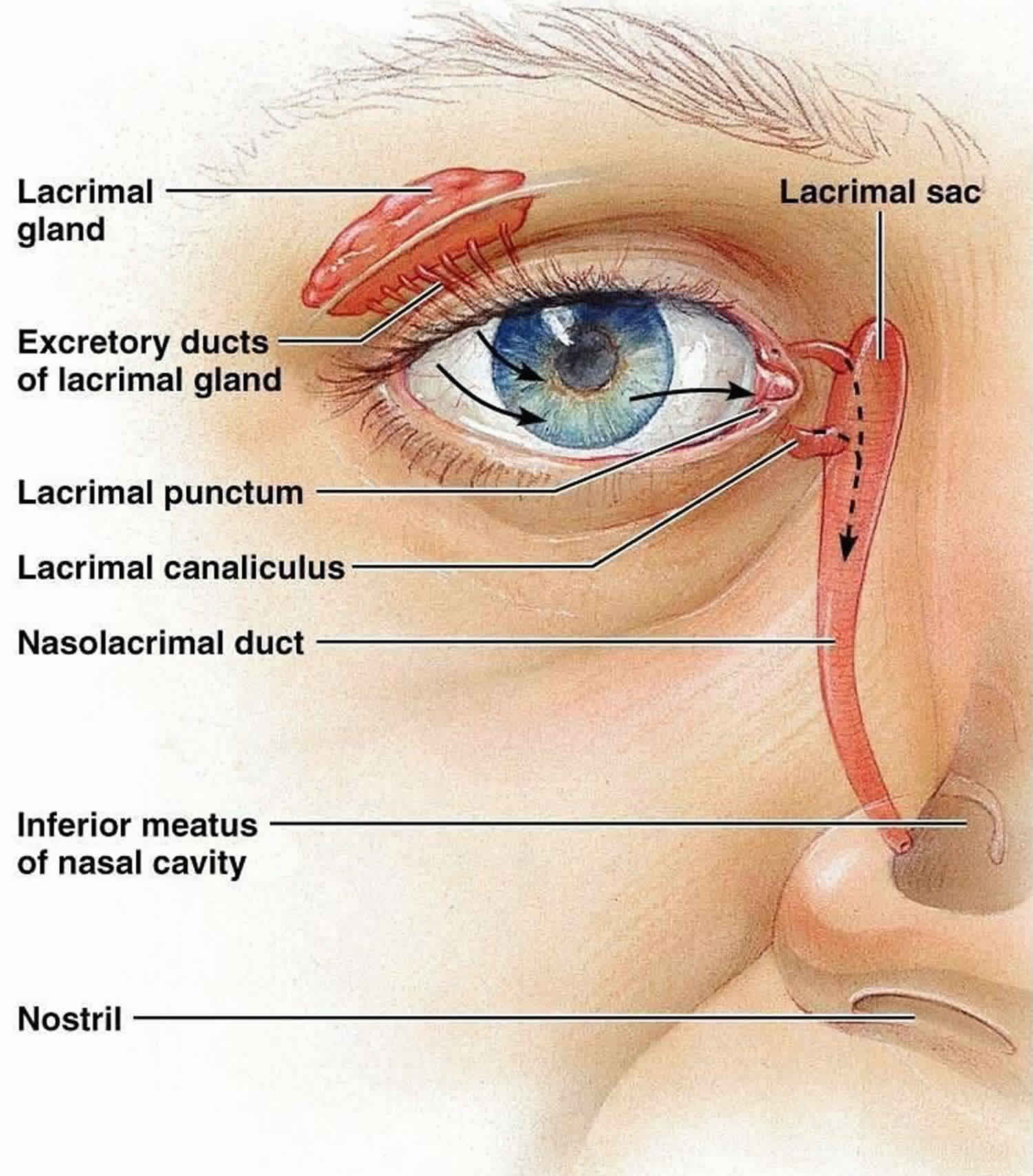What causes watery eyes
Watery eyes also called epiphora, means you have too many tears draining from the eyes. Tears help keep the surface of the eye moist. They wash away particles and foreign objects in the eye.
Your eyes are always making tears. Tear glands produce tears, and tear ducts carry the tears from the glands to the surface of your eye. These tears leave the eye through a small hole in the corner of the eye called the tear duct (see Figure 1 below). Your tears clean your eyes every time you blink. Tears also keep your eyes moist, which is important for your vision.
Watery eyes can be due to many factors and conditions.
It’s normal for your eyes to water in smoky environments or if you’re outside in the cold or wind.
An eye injury or something in your eye, such as an eyelash or a piece of grit, can also make your eyes water.
Problems with the tear system can include too many tears, too few tears, or problems with the tear ducts. Treatment of the problem depends on the cause.
Depending on the cause, watery eyes may clear up on their own.
Common causes of watery eyes:
- Allergies, e.g., allergy to mold, dander, dust
- Blepharitis (eyelid inflammation)
- Blocked tear duct
- Common cold
- Conjunctivitis
- Corneal abrasion (scratch): First aid
- Corneal ulcer
- Dry eye syndrome (decreased production of tears)– this can cause your eyes to produce too many tears
- Ectropion (your eyelid drooping away from the eye)
- Entropion (your eyelid turning inwards)
- Foreign object in the eye (such as dust or sand)
- Hay fever (allergic rhinitis)
- Ingrown eyelash (trichiasis)
- Keratitis (inflammation of the cornea)
- Inward-growing eyelashes (ectropion)
- Pink eye (conjunctivitis)
- Smog or chemicals in the air or wind
- Sty (a red, painful lump near the edge of your eyelid)
- Tear duct infection
- Trachoma
- Trichiasis (eyelashes are misdirected and grow inwards toward the eye)
Other causes of watery eyes:
- Bell’s palsy
- Blow to the eye or other eye injury
- Bright light
- Burns
- Chemical splash in the eye
- Chronic sinusitis
- Facial nerve palsy
- Inflammatory diseases
- Radiation therapy
- Rheumatoid arthritis (inflammatory joint disease)
- Sarcoidosis (collections of inflammatory cells in the body)
- Sjogren’s syndrome
- Stevens-Johnson syndrome
- Surgery of the eye or nose
- Thyroid disorders
- Tumors affecting the tear drainage system
- Granulomatosis with polyangiitis (Wegener’s granulomatosis)
Medication causes of watery eyes:
- Chemotherapy drugs
- Epinephrine
- Eyedrops, especially echothiophate iodide and pilocarpine
Increased tearing sometimes happens with:
- Eyestrain
- Laughing
- Vomiting
- Yawning
One of the most common causes of excess tearing is dry eyes. Drying causes the eyes to become uncomfortable, which stimulates the body to produce too many tears. One of the main tests for tearing is to check whether the eyes are too dry.
In infants, persistent watery eyes, are commonly the result of blocked tear ducts. The tear ducts don’t produce tears, but rather carry away tears, similar to how a storm drain carries away rainwater. Tears normally drain into your nose through tiny openings (puncta) in the inner part of the lids near the nose. In babies, the tear duct may not be fully open and functioning for the first several months of life. It usually gets better by the time they’re 1 year old.
In older adults, persistent watery eyes may occur as the aging skin of the eyelids sags away from the eyeball, allowing tears to accumulate and flow out.
Sometimes, excess tear production may cause watery eyes as well.
Allergies or viral infections (conjunctivitis), as well as any kind of inflammation, may cause watery eyes for a few days or so.
Watery eyes is rarely an emergency.
You should seek help right away if:
- Chemicals get into the eye
- You have severe pain, bleeding, or loss of vision
- You have a severe injury to the eye
- You have watery eyes with reduced vision
- You have watery eyes with pain around your eyes
- You have watery eyes with a foreign body sensation
- Your eyes keep watering and it’s stopping you doing everyday activities
- Your eyelid is turning inwards or drooping away from your eye
- You have any lumps or swellings around your eyes
- Your eyes are very sore or painful
- Your baby’s eyes are sore, red or very watery
Also, contact your health care provider if you have:
- A scratch on the eye
- Something in the eye
- Painful, red eyes
- A lot of discharge coming from the eye
- Long-term, unexplained tearing
- Tenderness around the nose or sinuses
Figure 1. Eyes tear glands and apparatus
Watery eyes diagnosis
Your doctor will examine your eyes and ask questions about your medical history and symptoms. Questions may include:
- When did the tearing start?
- How often does it happen?
- Does it affect both eyes?
- Do you have vision problems?
- Do you wear contacts or glasses?
- Does the tearing happen after an emotional or stressful event?
- Do you have eye pain or other symptoms, including headache, stuffy or runny nose, or joint or muscle aches?
- What medicines do you take?
- Do you have allergies?
- Did you recently hurt your eye?
- What seems to help stop the tearing?
Your doctor may order tests to help determine the cause.
Watery eyes treatment
Treatment depends on the cause of the watery eyes. Therefore, it is important to determine the cause of your watery eyes before treating yourself at home.
For example:
- eye drops can help if your eyes are dry or infected
- medicines can help if you have an allergy
- anything in your eye (such as a piece of grit) can be removed
- a small operation may be needed if you have a problem with your eyelids or you have blocked tear ducts.






